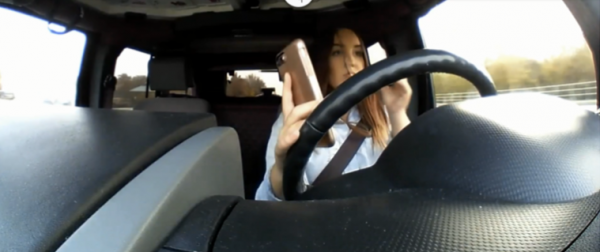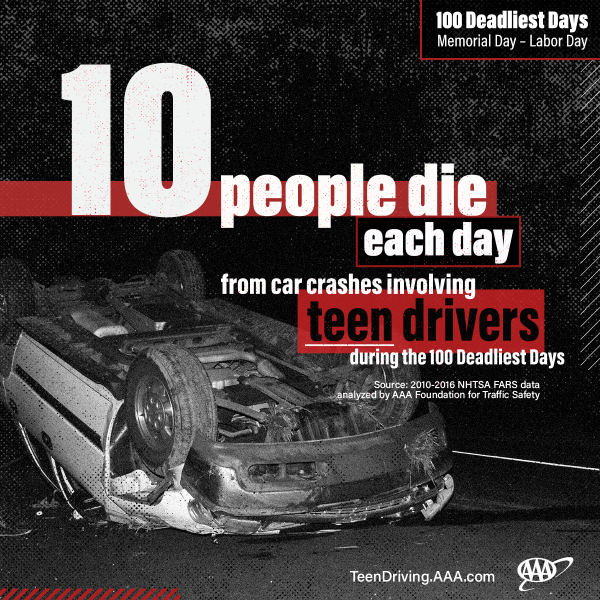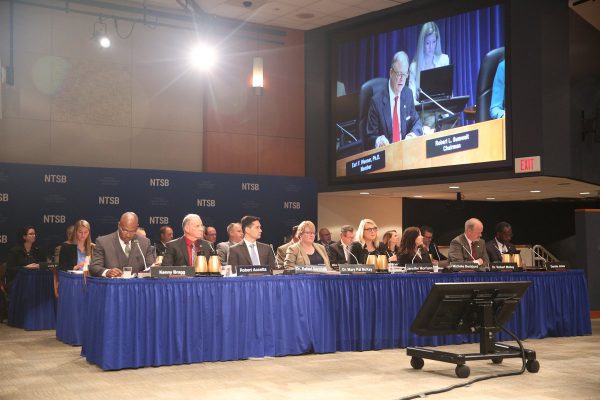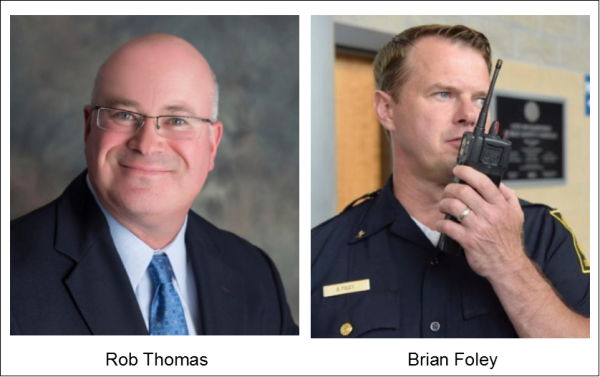Dangers of Distracted Driving Focus of New Documentary Produced in CT
/A decade ago, local producer/director/writer Jennifer Boyd’s documentary Teens Behind the Wheel brought an EMMY Award and generated impactful airing on Connecticut Public Television and PBS, along with much discussion on news programs and increased awareness at driving schools across the country. Well, it’s a decade later, and technology has provided the foundation for a sequel that is, in many ways, more troubling than the original. 3 Seconds Behind the Wheel, which debuts on Connecticut Public on Thursday evening, is a new documentary and podcast series that follows the lives of eight drivers over six months using in-car cameras and tracking technology to expose the often-hidden behavior of distracted drivers.
3 Seconds Behind the Wheel, which debuts on Connecticut Public on Thursday evening, is a new documentary and podcast series that follows the lives of eight drivers over six months using in-car cameras and tracking technology to expose the often-hidden behavior of distracted drivers.
The documentary is scheduled for national release in this fall. It has been described as a “window into our own lives,” by its realistic depiction of the pervasiveness – and dangers - of districted driving.
Why three seconds? That is the amount of time it takes to send a text message, choose a song, or engage in other activities that can impact safe driving behavior. That is also how long it takes to drive across a football field.
Producers gathered weekly data from subjects in Florida and Connecticut to get an honest picture of the many activities drawing drivers’ attention off the task of driving. Experts from MIT, Cambridge Mobile Telematics, Safety Track, and the University of Connecticut provided monitoring equipment, data storage, and expert analysis. The production took well over a year to complete.
 The film also gives audiences a firsthand look at emerging technologies that could one day offer solutions to rising crash statistics. The documentary follows researchers at Google who are using driving simulators to develop next-generation in-car infotainment systems, and explores how one Swedish company is experimenting with technology that could one day allow cars to understand human feelings and make driving decisions based on individual needs.
The film also gives audiences a firsthand look at emerging technologies that could one day offer solutions to rising crash statistics. The documentary follows researchers at Google who are using driving simulators to develop next-generation in-car infotainment systems, and explores how one Swedish company is experimenting with technology that could one day allow cars to understand human feelings and make driving decisions based on individual needs.
“While many of these drivers’ habits will shock you, this is a very honest and intimate look at human nature,” said Jennifer Boyd, producer, director and writer of 3 Seconds Behind the Wheel. “And it provides a little insight into some truths about all of us.”
State DOT Commissioner James Redeker noted that distracted driving is a major contributor to crashes and deaths on highways. Officials also noted that “it only takes three seconds to take a life or to end your own.”

Over the past 20 years, Boyd has produced public television documentaries on topics ranging from climate change to gun control, and she's won 9 Emmy Awards for that work. Assisting her on the latest project were Catherine Sager, Senior Producer/Corporate Liaison; Cecilia Prestamo, Video Editor/Producer and Script Supervisor; Paul Smith, Director of Photography; and Tom Nelson, Editor. Nancy Bauer, Connecticut Public’s Vice President Sales/Corporate Support, is credited a being a driving force in the decision to research and produce the documentary.
3 Seconds Behind the Wheel premieres Thursday, June 21 at 8 p.m. on Connecticut Public Television and will rebroadcast Tuesday, July 17 at 10 p.m. and Saturday, September 15 at 7 p.m. More information about 3 Seconds Behind the Wheel can be found at 3seconds.org. Funding for 3 Seconds Behind the Wheel is made possible by Presenting Sponsor Travelers with additional support from General Motors and the Connecticut Department of Transportation.



 The survey found that 38 percent of students whose grades were mostly A’s texted or e-mailed while driving a car on at least one occasion in the 30 days prior to the survey. The percentage was slightly less among students with lower grades: 31% of students with mostly B’s, 30% of students with mostly C’s and 23% of students with mostly D’s and F’s.
The survey found that 38 percent of students whose grades were mostly A’s texted or e-mailed while driving a car on at least one occasion in the 30 days prior to the survey. The percentage was slightly less among students with lower grades: 31% of students with mostly B’s, 30% of students with mostly C’s and 23% of students with mostly D’s and F’s. The ranking does not capture the full extent of deprivations or hardships affecting children. Instead, it focuses on some key rights, or “guarantees” of childhood: life, healthy growth and development, education and protection from harm. If a child experiences all of these, his/her childhood is considered to be “intact.”
The ranking does not capture the full extent of deprivations or hardships affecting children. Instead, it focuses on some key rights, or “guarantees” of childhood: life, healthy growth and development, education and protection from harm. If a child experiences all of these, his/her childhood is considered to be “intact.”
 The report notes that “While children are only 20 percent of the population, they are 100 percent of America’s future.” Save the Children’s ranking reveals children in New Jersey, Massachusetts, Vermont and New Hampshire are far more likely to experience safe, secure and healthy childhoods than children in Louisiana, Mississippi, Oklahoma and New Mexico.
The report notes that “While children are only 20 percent of the population, they are 100 percent of America’s future.” Save the Children’s ranking reveals children in New Jersey, Massachusetts, Vermont and New Hampshire are far more likely to experience safe, secure and healthy childhoods than children in Louisiana, Mississippi, Oklahoma and New Mexico.





 “We understand, by all accounts, many of them may be using products that closely resemble a USB flash drive, have high levels of nicotine and emissions that are hard to see. These characteristics may facilitate youth use, by making the products more attractive to children and teens. These products are also more difficult for parents and teachers to recognize or detect. Several of these products fall under the JUUL brand, but other brands, such as myblu and KandyPens, that have similar characteristics are emerging.”
“We understand, by all accounts, many of them may be using products that closely resemble a USB flash drive, have high levels of nicotine and emissions that are hard to see. These characteristics may facilitate youth use, by making the products more attractive to children and teens. These products are also more difficult for parents and teachers to recognize or detect. Several of these products fall under the JUUL brand, but other brands, such as myblu and KandyPens, that have similar characteristics are emerging.”
 The Summit will feature nearly a dozen sessions and speakers, many from local businesses, highlighting best practices and latest developments in a range of technology arenas.
The Summit will feature nearly a dozen sessions and speakers, many from local businesses, highlighting best practices and latest developments in a range of technology arenas.
 If you have a sense that reports of hit-and-run accidents have increased in frequency, you’re correct.
If you have a sense that reports of hit-and-run accidents have increased in frequency, you’re correct. In all states, it’s the drivers legal and moral responsibility to avoid hitting pedestrians, bicyclists, or another vehicle; and leaving a crash scene significantly increases the penalties, whether or not the driver caused the crash, AAA emphasized.
In all states, it’s the drivers legal and moral responsibility to avoid hitting pedestrians, bicyclists, or another vehicle; and leaving a crash scene significantly increases the penalties, whether or not the driver caused the crash, AAA emphasized.


 Stating that “justice should not have an expiration date,” the organization points out that eight states have no statute of limitations for felony sexual assault crimes, and 28 states have a statute of limitations of 21 years or more. Only 10 states, including Connecticut, have a statute of limitation of 10 years or less.
Stating that “justice should not have an expiration date,” the organization points out that eight states have no statute of limitations for felony sexual assault crimes, and 28 states have a statute of limitations of 21 years or more. Only 10 states, including Connecticut, have a statute of limitation of 10 years or less. According to the National Institutes of Health, sexual violence is the leading cause of Post-Traumatic Stress Disorder (PTSD) in women.
According to the National Institutes of Health, sexual violence is the leading cause of Post-Traumatic Stress Disorder (PTSD) in women. 

























